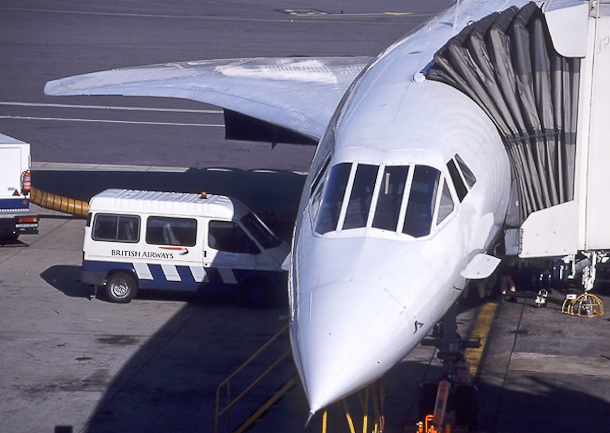
Boeing, the Future of Flight and AirlineReporter.com are proud to share details on Aviation Geek Fest 2013 (#AGF13). Here is the current schedule (which is up for change due to unforeseen circumstances). I will be updating this page as new things are added to the schedule. Check the change-log on the bottom to see what has changed:
SCHEDULE HAS BEEN MOVED TO A NEW PAGE
QUESTIONS (from comments or email – will be updated):
- Where should I stay? Saturday will occur down in the Renton, WA area, where Sunday will happen up at Paine Field in Everett, WA. The Hilton Garden Inn (which is RIGHT on Paine Field) is offering a special #AGF13 discount.
- Should I get a rental car? Seattle is not best known for their public transportation and getting up to Paine Field could be tricky.
- What if I am not able to get tickets at 11am on Saturday, can you hold some? Unfortunately we cannot. This would be a good time to call in those favors from family and friends and ask them to get tickets for you — just remember to pay them back.
- Can I take photos? Cameras will not be allowed on the Boeing factory tours, but there will be someone that will take group photos that you can use. Cameras ARE allowed on the Dreamliner Gallery tour.
- Are there age restrictions? Yes, you must be 12 or older to go on the Boeing factory tours. There are no age restrictions for the Dreamliner Gallery.
- What do I wear? It is Seattle in February, so bet on chilly, gray and rainy. For the Boeing tours, you cannot wear open toed shoes, backless shoes (like clogs) or high heels.
- What if I have special needs? Please email me (da***@*************er.com) ASAP so we can prepare for your needs.
UPDATES:
1/26 11:20AM: After a little panic at 11:02am, where it looked like every ticket was sold, we realize that was a mistake and more tickets are available. In the first 15min, the page received about 1500 views. At this point, almost 60% of all the tickets are sold.
1/26 4:45PM: About 80% of the tickets are gone. Figuring most should be gone by the end of the weekend. Thanks for so many people being interested. Will update when sold out.
Noon 1/27: Over 90% of the tickets are sold. Two of the Dreamliner Gallery time slots are sold out (the 10am still has a few tickets). The events page has seen over 2300 views in the 25hrs it has been live. Very awesome. Imagine all the tickets will sell out by early next week at the latest.
8:15am 1/28: Only a few tickets left. 737 Tour: 7, Everett Factory Tour: 2, Dreamliner Gallery Tour: 1.
10:25am 1/28: There are only three Boeing 737 tour tickets and everything else has sold out.
11:00am 1/28: All the tickets have sold out. Add yourself to our waiting list to be get tickets if people cancel.
1:00pm 1/28: Flying Heritage Collection will allow free admission to anyone with a #AGF13 ticket on either Sat or Sun. Updated the above schedule.
9:00am 1/29: Historic Flight Foundation, at Paine Field, will offer free admission Saturday and Sunday between 10am-5pm with badges/tickets.
1:00pm 1/29: Museum of Flight Restoration Center – free admission Saturday between 9am – 4pm.
1:00pm 1/30: Updated to a new page with all the update information and this page will no longer be updated.
Terminal 8 at John F. Kennedy Airport in New York yesterday hosted a special event: the first American Airlines plane with the company’s new livery was in town. The 737-800 is the first American aircraft with the new livery, but a Boeing 777-300 ER, the carriers new flagship aircraft, is being painted right now and we should see it before its maiden flight to Sao Paulo on January 31st.
With members of the media invited, American Airlines talked about the change to their iconic livery, and what it means for the brands future. In general, most people I spoke with like the change, though some were a bit reluctant to accept the new tail design.
After seeing it in person, I am torn over this new livery. I like a the look of the body of the aircraft, but the tail leaves a bit to be desired. There is a lot of detail in the paint on the tail, but most of it is lost at a distance. The engines and winglets also need something to tie it all together.
Check out some close up shots of the new paint below, you might just see some details you didn’t notice before. With a bit more time to process; what do you think about the new livery?
Read some more about this event and AA’s reaction to criticism of the design over at APEX.com.
-
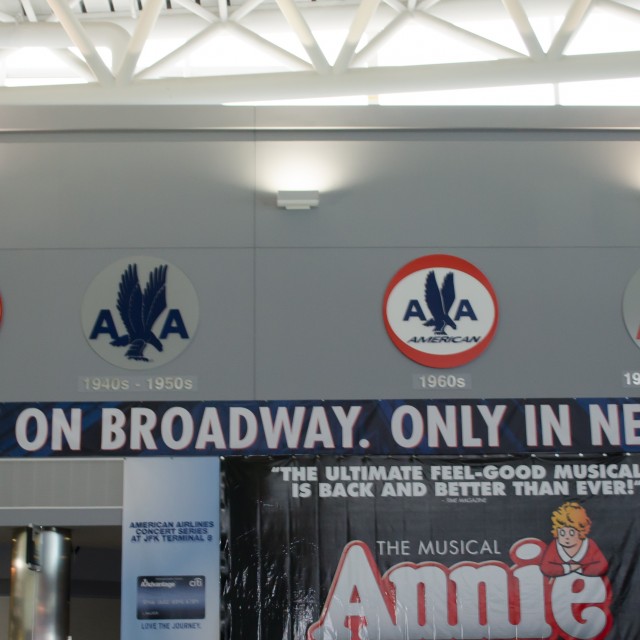
-
Time to update the AA logo history in T8, JFK.
-
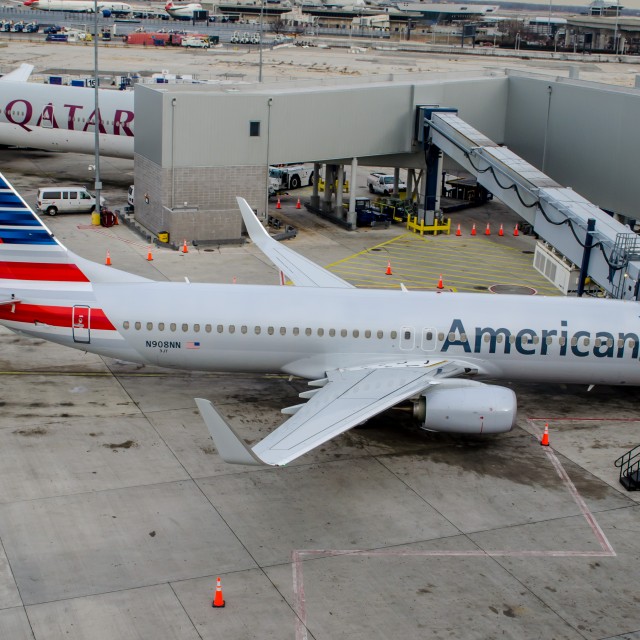
-
American Airlines 737 featuring the new livery, as seen from above in the operations tower.
-
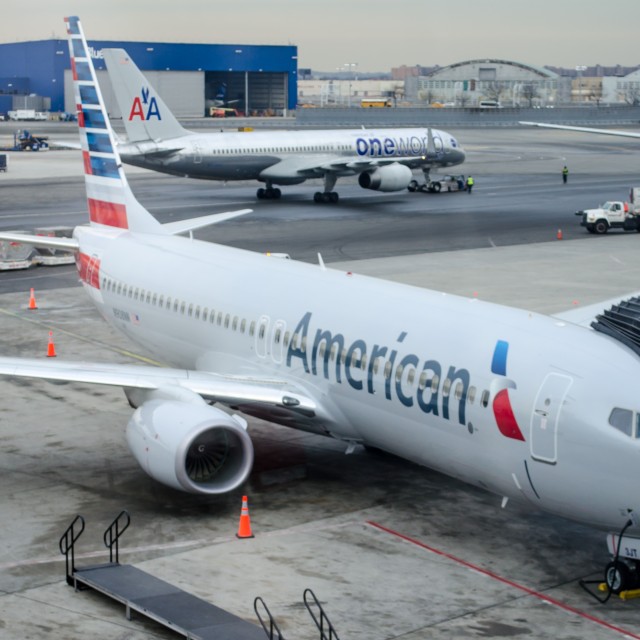
-
I wonder what the One World livery will look like when it is updated?
-
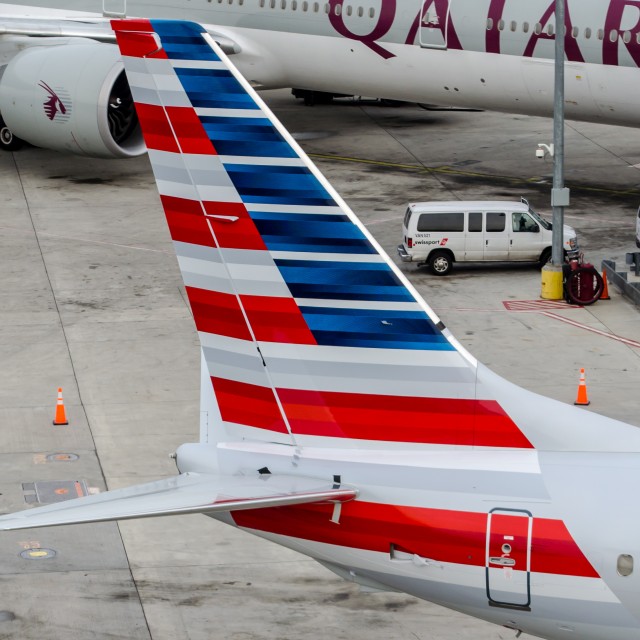
-
American Airlines 737 tail featuring the new livery, as seen from above in the operations tower.
-
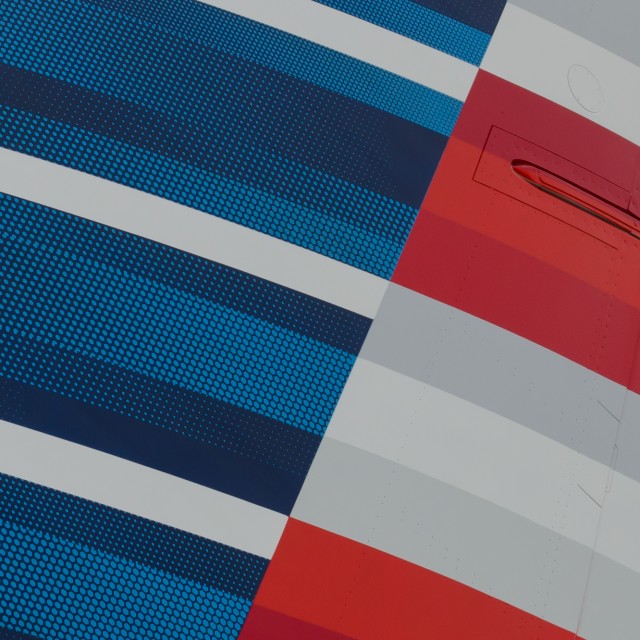
-
The new American Airlines tail design, close up. Much more detail here than you see from a distance.
-
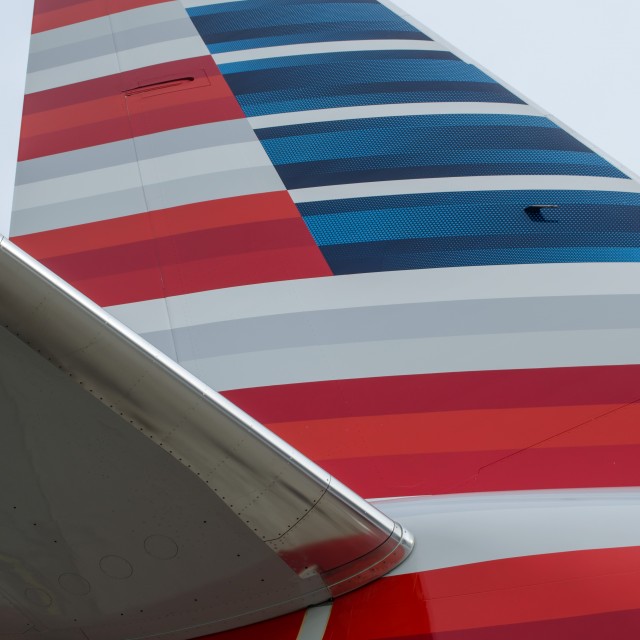
-
The new American Airlines tail design
-
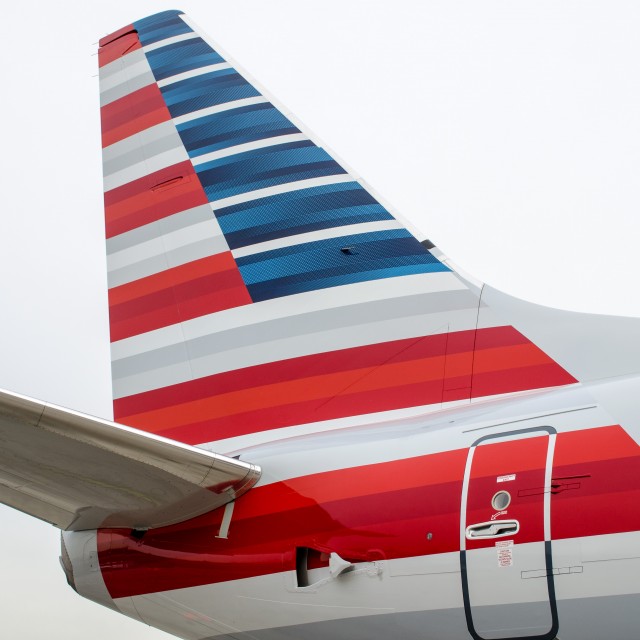
-
The new American Airlines tail design
-
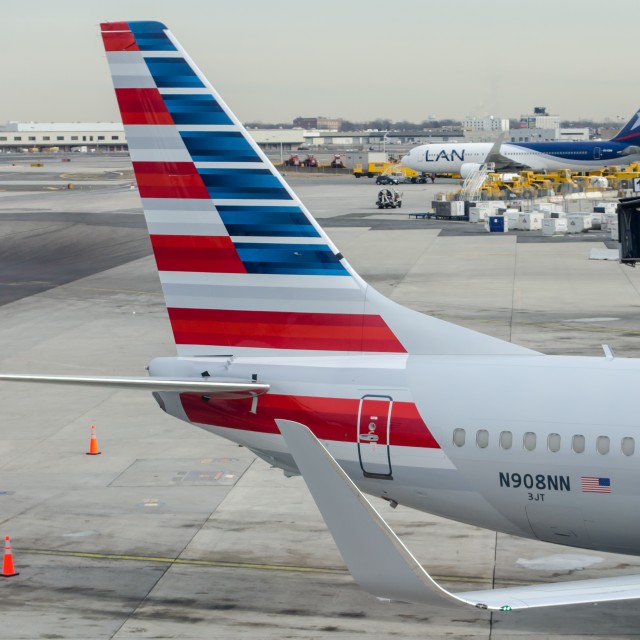
-
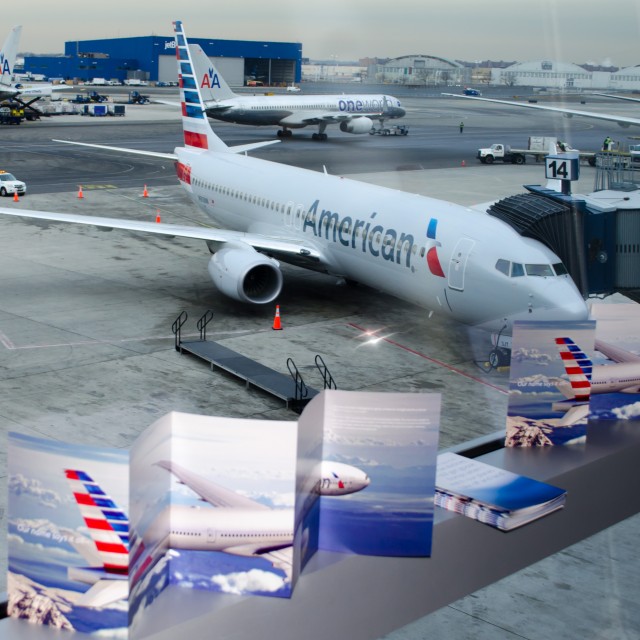
-
American 737 with the new livery, and a promo poster for the upcoming Boeing 777-300ER
-
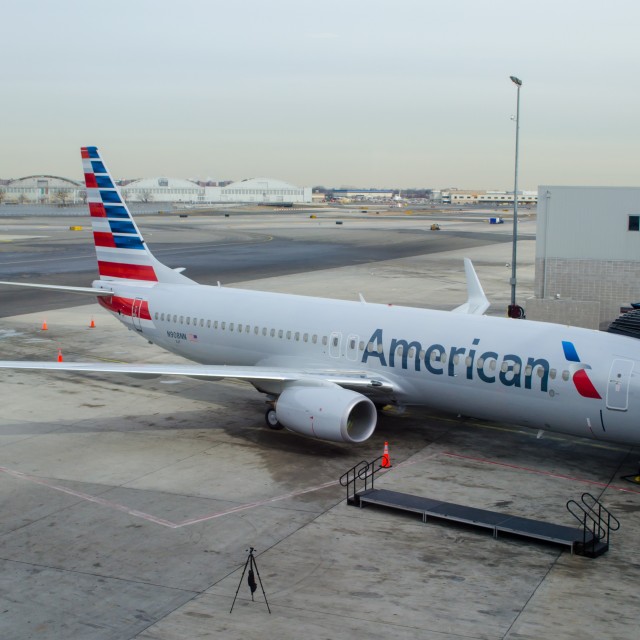
-
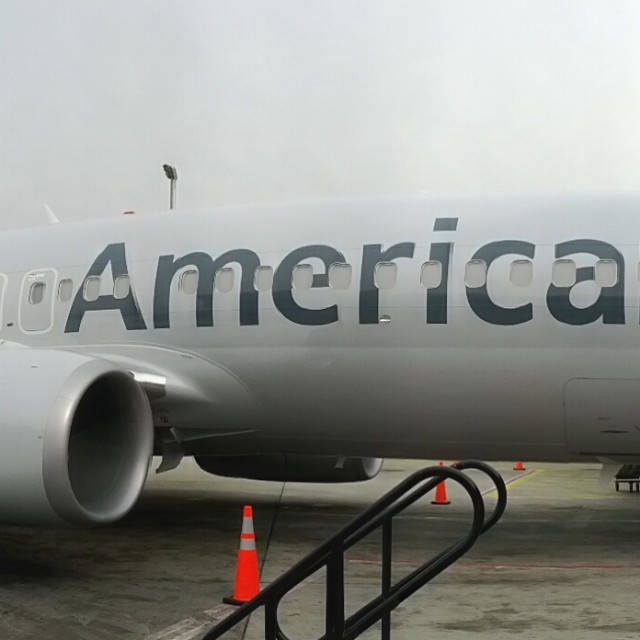
-
Panorama
-
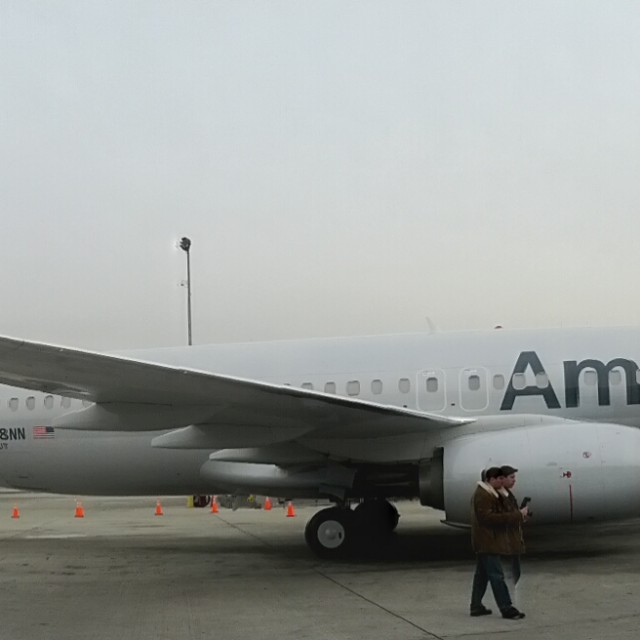
-
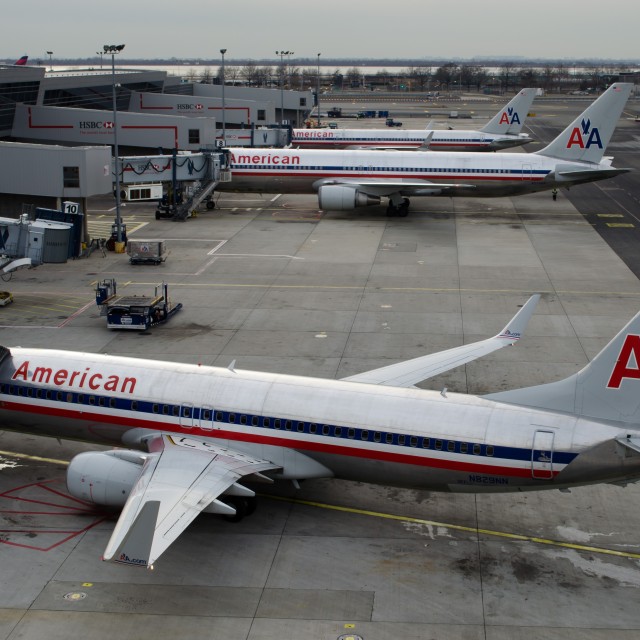
-
Say goodbye, old livery!
-
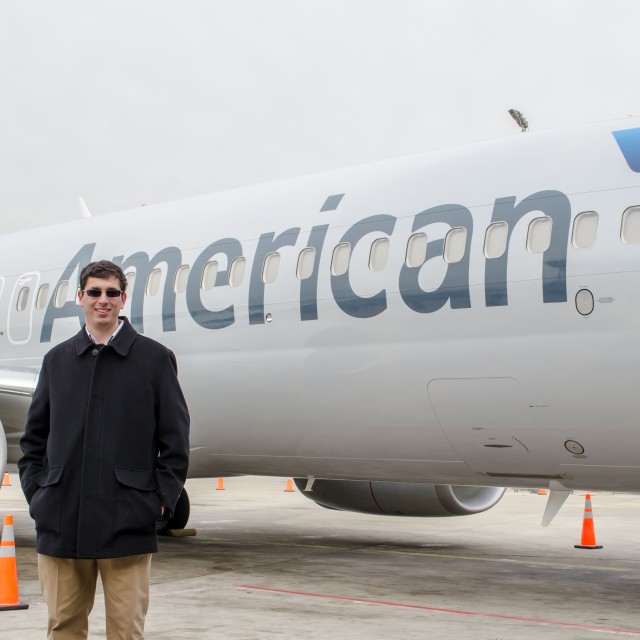
-
That’s me!
-
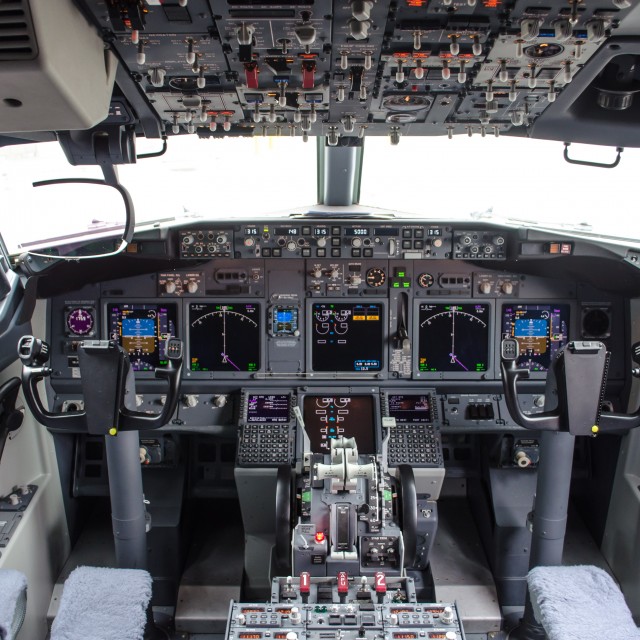
-
Flight deck of the Boeing 737
-
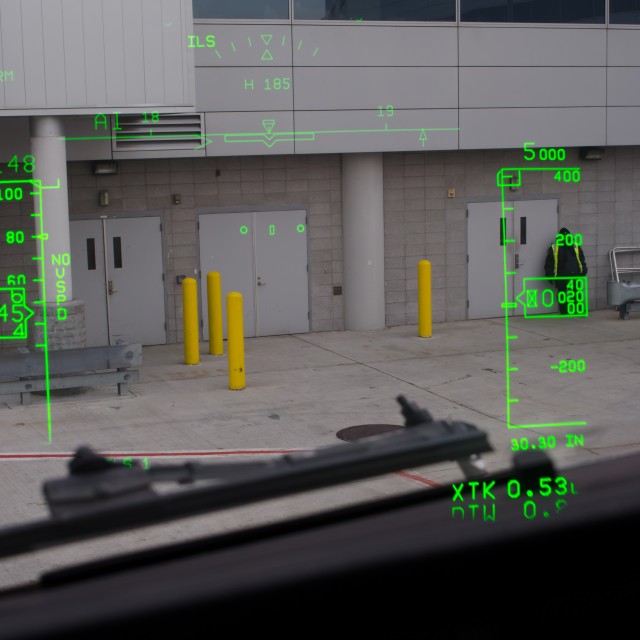
-
Heads up display on the Boeing 737
-
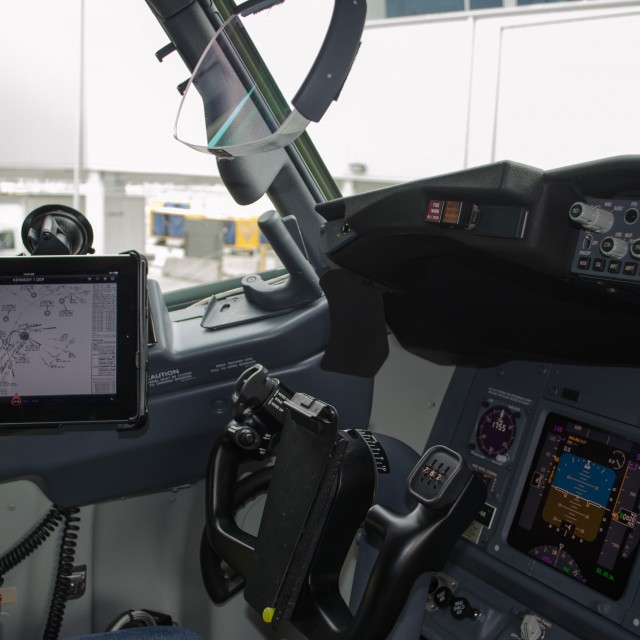
-
Left seat of the 737, fully stocked with an iPad for the electronic flight bag
-
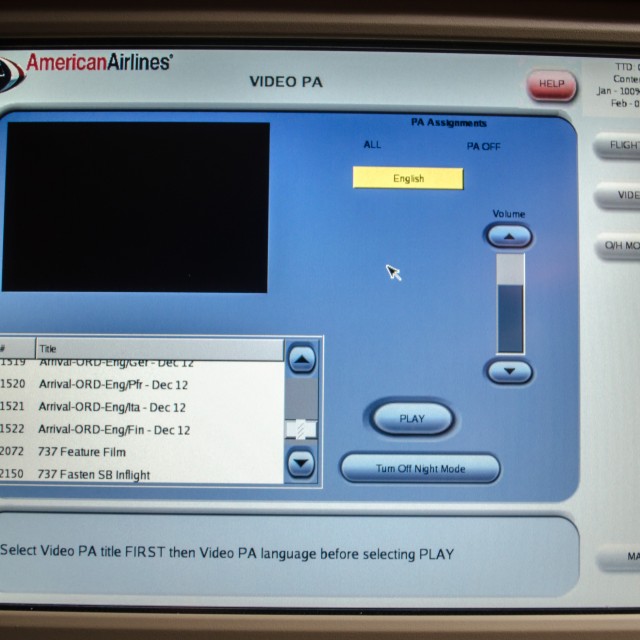
-
PA system controls
-
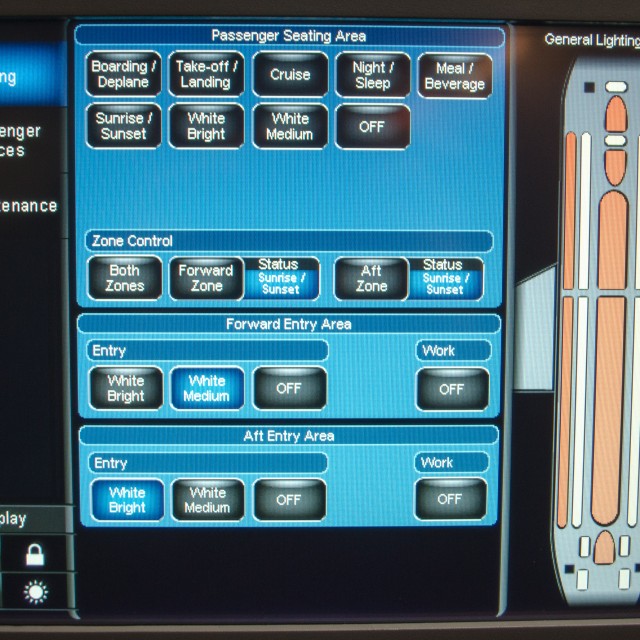
-
Boeing Sky Interior controls
-
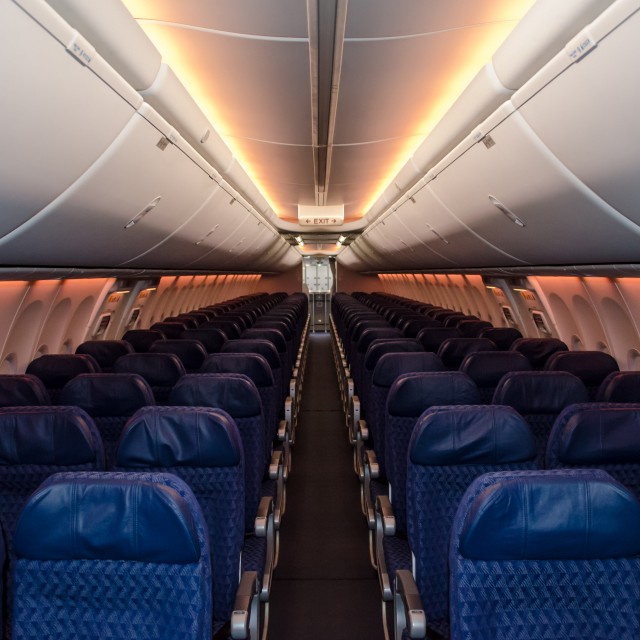
-
Boeing Sky Interior
-
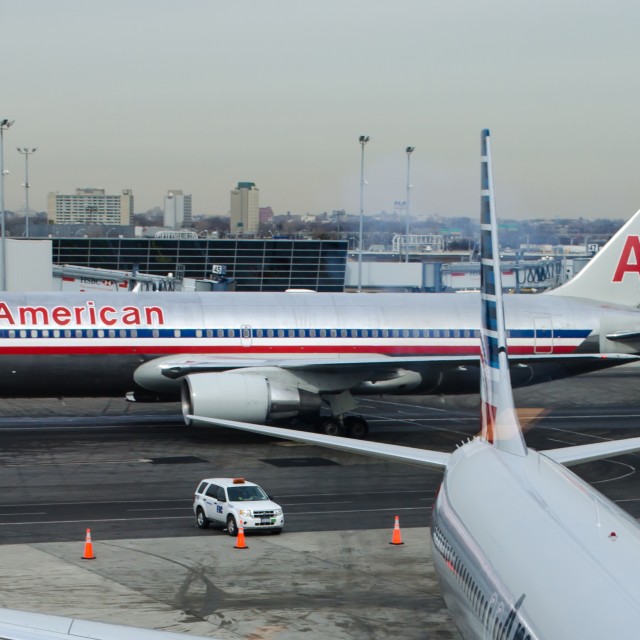
-
Old and New
-
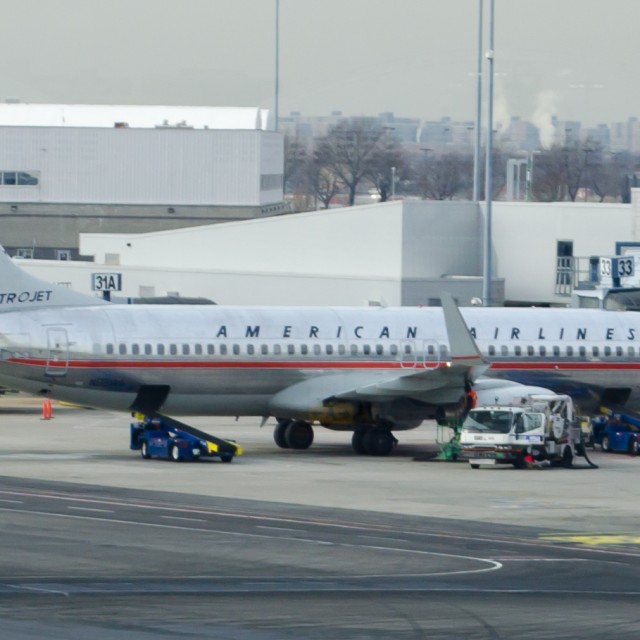
-
The American Astro Jet showed up!
 |
This story written by… Jason Rabinowitz, Correspondent.
Jason is a New York City native who has grown up in the shadow of JFK International Airport. A true “avgeek”, he enjoys plane spotting and photography, as well taking any opportunity he can get to fly on an aircraft.
@AirlineFyer | FaceBook | |
Earlier this week marked the 37th anniversary of the first Concorde flight and to help celebrate, Jaunted ran a story by Joe Corrigan who re-lived his JFK-LHR flight he took in July 2003. I wanted to share and here is the first two paragraphs of the story and the rest can be read on Jaunted.
I don’t know quite what it was about Concorde, but ever since I first saw her as a kid, I was mesmerised. That shape, those linesthere was something about her that drew me in. I was 14 the first time I saw her with my own eyes, as my my uncle had discovered Concorde would fly into Sydney, my home town, on a round-the-world charter. Together we headed to the airport to see her land.
That aircraft, F-BVFC, zoomed in and landed with full reverse and later took off with full afterburner as I watched from afar. I was hooked. The experience was not only visual and aural, but earth-shaking. Everything in the vicinity shuddered under the engine power; you could feel Concorde slice through the air and this in itself made it all the more visceral. It became a dream of mine to fly on her, one I never thought likely to come true.
READ THE REST OF JOE’S STORY AND SEE MORE PHOTOS ON JAUNTED.COM

Boeing, the Future of Flight and AirlineReporter.com are proud to share details on Aviation Geek Fest 2013 (#AGF13)…
TICKETS GO ON SALE ON SAT, JAN 26th AT 11AM PST
All tickets will be first come, first serve. There are 150 tickets (for each of the main events) up for grabs, so quite a few folks will be able to enjoy the #AGF13 experience. Yes, if you click on the links right now, it will show invalid, but the links will work when the tickets go on sale.
The event will run a bit differently this year. One person can do everything and you do not have to pick and choose.
Please check out this page for all the Aviation Geek Fest updates (I don’t want to have to update multiple pages).
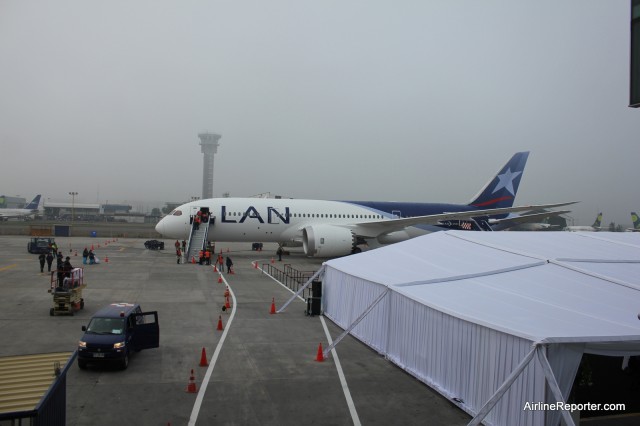
LAN’s first Boeing 787 Dreamliner sits at their maintenance facility at Santiago.
Back in the day when the Boeing 787 was allowed to fly, I took LAN’s first 787 delivery flight from Everett, WA to Santiago Chile. During my short stay, I was able to tour their maintenance and training facility and I wanted to share what I was able to explore.
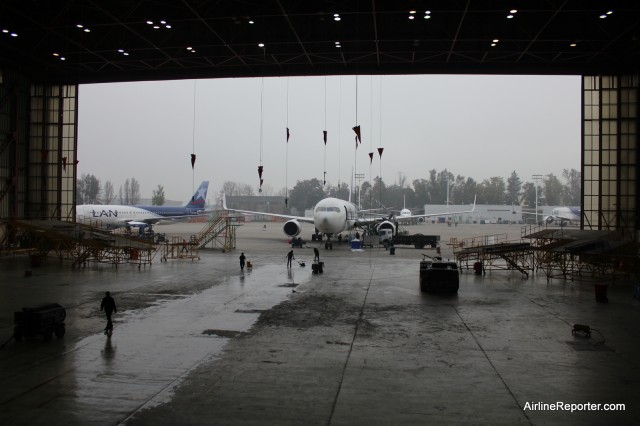
Boeing 767s get winglets installed.
LAN has been going through a huge undertaking of upgrading their older Boeing 767s to each have winglets to increase their fuel efficiency. When LAN started the process, it would take them about 49 days to install the winglets. More recently,it only takes them two weeks.
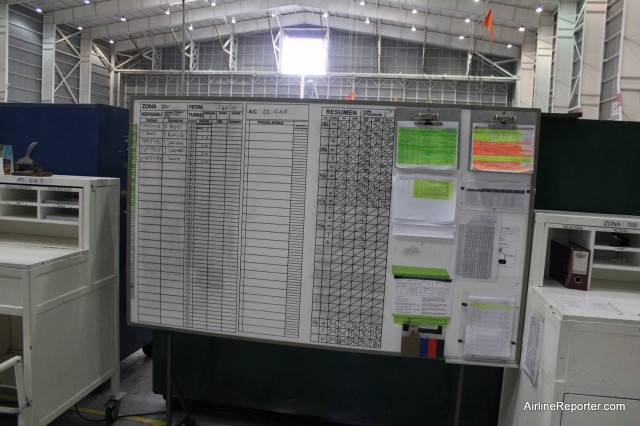
Sometimes, the simplest way is the best.
One of the most interesting aspects was using old-school white boards and papers to keep track of where each aircraft is at in the maintenance process. At first, I couldn’t imagine why they wouldn’t upgrade to computers, but their process absolutely works for them and why fix something that is not broken?
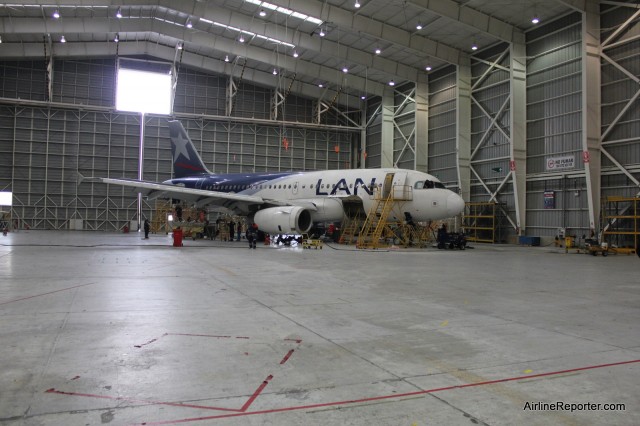
The Airbus A318 still looks like a baby airplane to me. LAN currently operates 5 of the type.
Typically, it takes about 12 hours to replace a Boeing 767 engine and only nine hours to replace one on an Airbus A318.
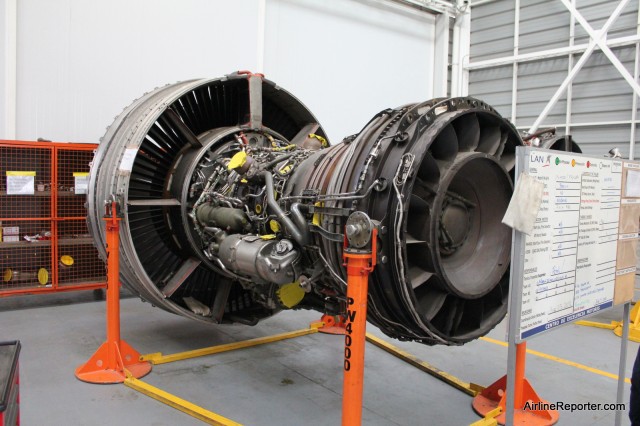
P&W4000 engine being worked on.
LAN is able to re-work up to ten engines at a time and the shop runs 24 hours per day, six days per week.
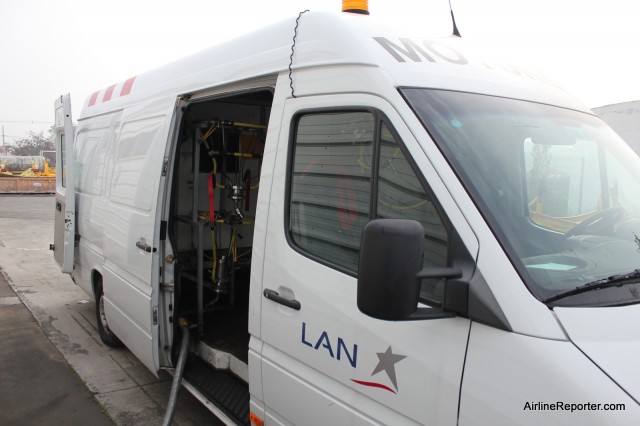
This is an engine cleaning truck (pretty sure that they had a fancier name for it) that can drive to clean the engines of a LAN aircraft.
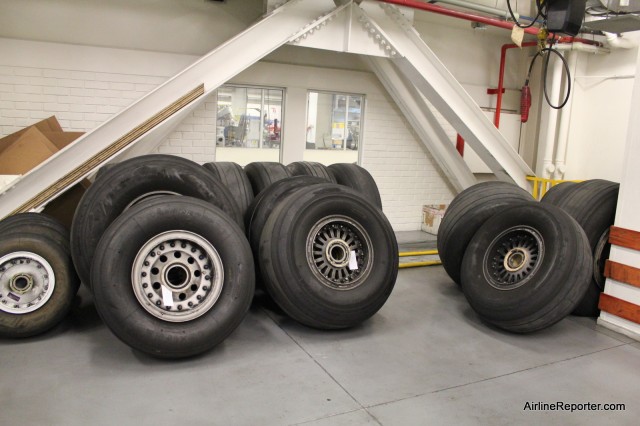
I started to get TIREd at this point in the tour (okay, not really and that was a bad joke).
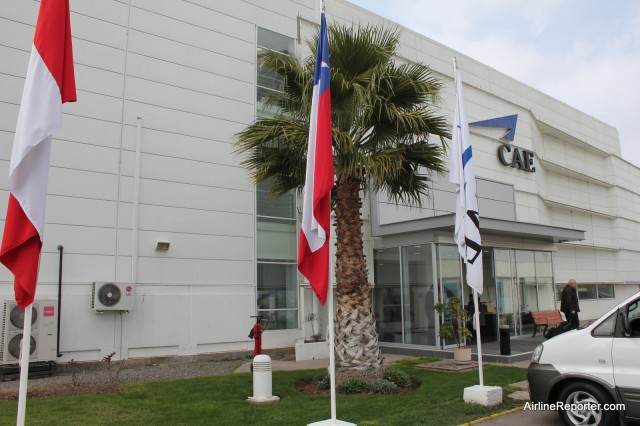
CAE training facility in Santiago.
LAN does not operate their own flight simulators or crew training, but outsource to CAE, which is located directly next to the airport.
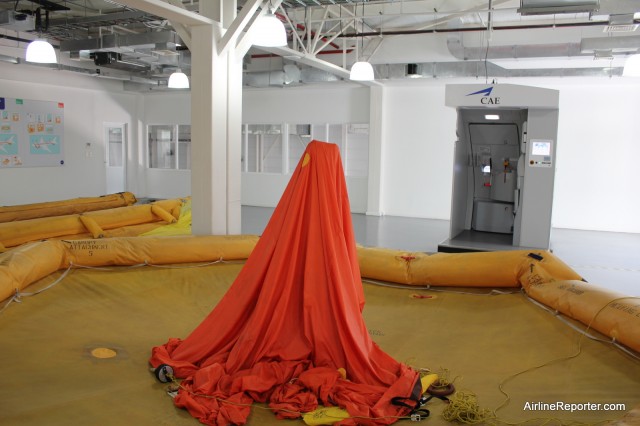
You probably never will need to use a raft like this, but it is good to know that flight attendants know how to use it, if needed.
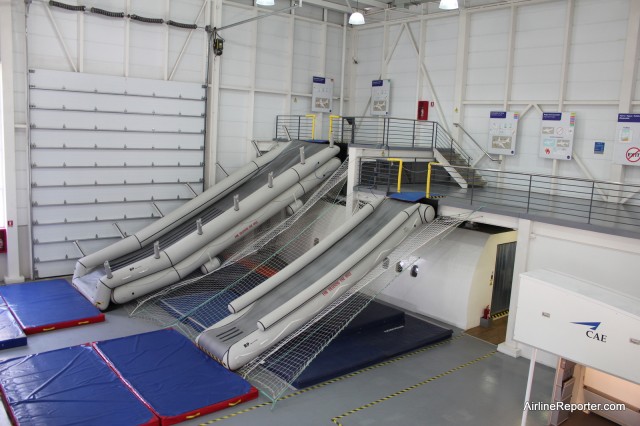
These may look like fun (I wasn’t allowed to slide down), but this is where flight attendants train how to evacuate an aircraft.
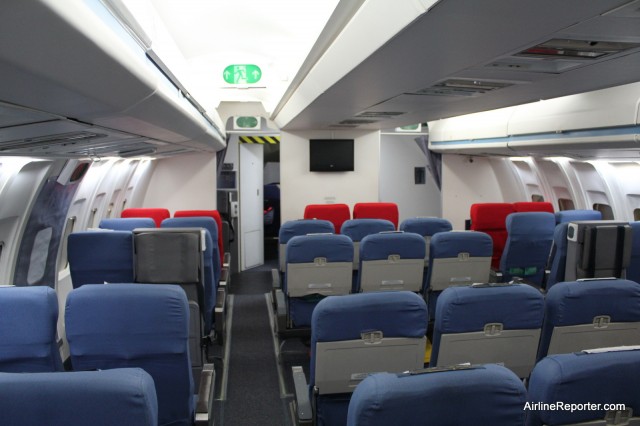
Boeing 767 interior mock up for safety training.
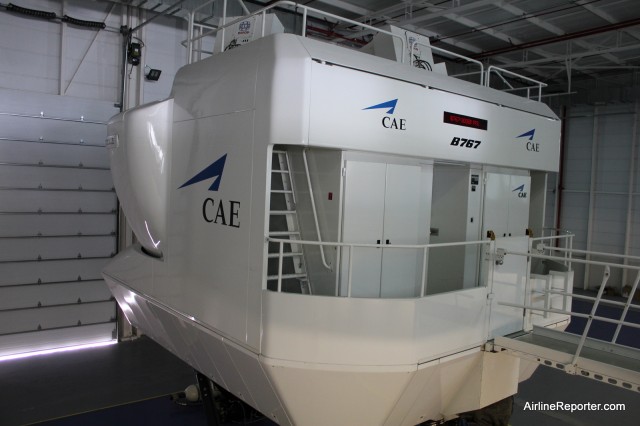
A CAE Boeing 767 flight simulator. Do I want to go inside? Um, yes please.
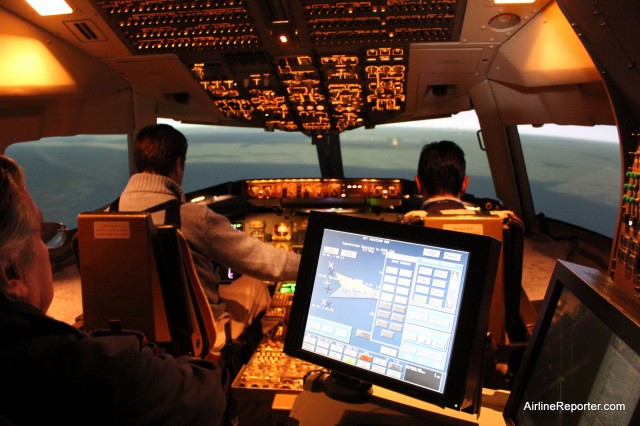
Pilots get training in the Boeing 767 simulator.
Was able to sit in on two current pilots who were doing additional training on the Boeing 767. They just had one engine go out during landing and had to react appropriately — we all made it.
CHECK ALL 41 PHOTOS OF THE MAINTENANCE / TRAINING FACILITY
 |
This story written by…David Parker Brown, Editor & Founder.
David started AirlineReporter.com in the summer of 2008, but has had a passion for aviation since he was a kid. Born and raised in the Seattle area (where he is currently based) has surely had an influence and he couldn’t imagine living anywhere else in the world.
@AirlineReporter | Flickr | YouTube |
























